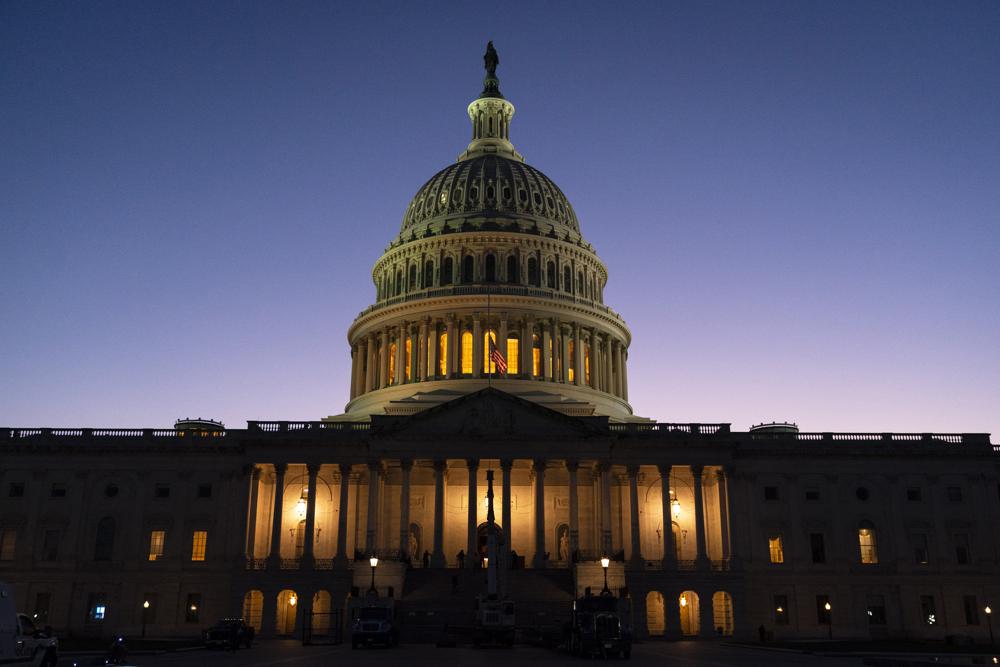
By most measures, the Midterm Election was disastrous for Republicans.
Most pundits of consequence were predicting a perfect storm of economic anxiety, pandemic fatigue, anti-woke sentiments and conspiratorial beliefs about the 2020 Election would vault the GOP back into the majority in both the U.S. House and U.S. Senate.
The “Dems in Disarray” storyline is an easy sell, and all the metrics agreed with it — despite a couple of Democratic bumps toward the end of the cycle, most polls still showed President Joe Biden underwater and Republicans up on the generic ballot.
And we all know that if national polls say Republicans are up a couple of points, they’re really up a couple more than that. How else do you explain every election since 2016?
That logic broke in 2022. Shortly after the election, Biden reclaimed his late-aughts swagger as he jubilantly snapped that narrative over his over his knee.
U.S. Senate Republicans, led by Rick Scott, had a campaign platform that went over like a wet fart and they recruited candidates to match. Pennsylvania was decided quickly. Arizona and Nevada were decided for the blue team days later. The Georgia runoff ended up being moot, but it put another feather in Democrats’ cap anyway.
Scott has taken his fair share of heat for the outcome, much of it deserved, but a 51-49 split in the U.S. Senate was always in the cards, belly buster or not.
The House was a different story.
To be sure, the GOP had plenty of not-ready-for-primetime players running for House as well, but their consistent messaging mixed with their advantage in state legislatures, and therefore the redistricting process, all but assured they would come out on top.
Hardly.
House Minority Leader Kevin McCarthy and the NRCC hit the field with the same 2016 Falcons energy as their Senate counterparts, seemingly determined to lose. Gov. Ron DeSantis is the only reason they are not tasting the same defeat.
How did DeSantis carry a national party’s campaign apparatus across the finish line? Having his name at the top of the ballot helped, but that wouldn’t have mattered much if he hadn’t flexed on legislative leaders or remade the state courts in his image.
The latter was doubly important in Florida’s redistricting saga breaking in favor of Republicans.
With Florida gaining another seat following the 2020 U.S. Census, state lawmakers passed a map that would have elected 17 Republicans and 11 Democrats, with an 18-10 split being the likely outcome in a GOP year. That’s a redward shift from the 16 Republicans and 11 Democrats Florida sent to the U.S. House two years ago, but it wasn’t good enough for DeSantis.
The Governor vetoed that map and held lawmakers’ priorities — and some of their political ambitions — hostage until they came back to Tallahassee for a do-over.
They relented, rubberstamping what FiveThirtyEight described as “a dream map for partisan Republicans.” The map, devoid of any meaningfully competitive district, was drawn to elect at least 20 Republicans and no more than eight Democrats.
A capitulatory Legislature was just the first ingredient. DeSantis also needed his map to survive court scrutiny.
That was a tougher sell, mostly because the Governor’s map dismantled the majority-minority district held by Democratic U.S. Rep. Al Lawson, replacing the Jax-to-Tallahassee district with a Republican stronghold that was ultimately won by Aaron Bean in November.
Leon Circuit Judge Layne Smith ruled for the plaintiffs challenging the map as a violation of the state’s Fair Districts amendment and ordered a different map, drawn by a Harvard professor, be put in place for the Midterms.
But as DeSantis has shown throughout his first term, when life hands him lemons, he does not make lemonade. He asks for the manager.
His administration immediately appealed Smith’s decision and, two weeks later, Florida’s 1st District Court of Appeal rolled it back. Appellate Judge A.S. Tanenbaum, a DeSantis appointee, said Smith should not have even entertained a request for an injunction from the parties challenging the map, writing that he would not even consider whether the map violates the Florida Constitution.
The Florida Supreme Court — also stocked with DeSantis appointees — went knuckle-deep into their ear canals, refusing to even hear a challenge to Florida’s map before the Midterms.
And with that, the map drawn by DeSantis’ Deputy Chief of Staff Alex Kelly, greenlit by the Legislature and affirmed by the courts, was put to the test. It shifted the Florida delegation from a 16-11 GOP advantage, to one that will send 20 Republicans and eight Democrats to the Capitol next month.
Feel free to dig into the math, but the long and short of it is Republicans’ tenuous majority in the U.S. House runs through the Sunshine State because DeSantis — with help from lawmakers and the courts — made it so.
Make the thank you cards out to DeSantis 2024.



4 comments
Joe Corsin
December 20, 2022 at 4:39 pm
Twas a historically epic RED FLOP!!!
r
December 21, 2022 at 8:30 am
not in Florida!!!!
r
December 21, 2022 at 8:32 am
gosh wonder what party pete belongs to and what paper he reads?
Truly Awful
December 21, 2022 at 12:46 pm
We pass a constitutional amendment to block any further map-drawing shenanigans and crass political gerrymandering in this State. What does DeSanctimonious do? He says that the legislature’s rigged maps were actually not rigged enough, and notwithstanding the requirements of the Florida Constitution they should be forced to gerrymander even harder. Our legislature not only jumps to action to placate their leader but does so with a smile. The court system does nothing to stop this scheme notwithstanding the clear violation of the Florida constitution. This is truly a shameful act of betrayal against Florida’s voters.. And this state is so far gone politically that very few citizens even care.
Comments are closed.